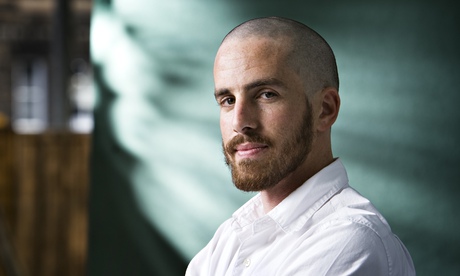
The premise of The Silent History is simple: in the early 2010s, right about now, children are born who fail to develop the necessary cognitive functions to acquire, understand and use language. Theo and Nancy are among the first parents to note the condition, as an increasing number – termed "silents" – arrive who are similarly unable to recognise language. For parents this is a painful world of doubt, and their response is addled by shame, incomprehension and blame. For scientists and doctors there is concern, fascination and clinical bias that condition and limit how they understand and attempt to treat these children. This netherland of powerlessness is mapped exceptionally well, and sets the platform for a book that freewheels between literary and SF territory. The setup is reminiscent of John Wyndham, whose novels The Midwich Cuckoos and Chocky featured children as both threat and threatened, in combination with the oral histories of World War Z and the fractured groups wandering through The Walking Dead. It's a confident and knowing ride, crafted in brief testimonies gathered into short sections. Despite the seriousness of the condition, the writing and plotting are hugely playful. Among other delights – gatherings at Coney Island, hideouts in woods and missile silos, stolen trucks – there's a punch-up with a troupe of wallabies.
The narrative skips between a succession of recorded testimonies from parents, siblings, politicians, doctors, crackpots etc, from 2011-44. The start is assured and steady, making reference to other public-health threats and crises (polio, thalidomide, Aids) that share a terrible uncertainty over the cause, and social isolation for the victims and their families. Desperation for a solution is matched by a certainty that a cure exists, either through treatment or training. The first section is emphatically about the way families and individuals are isolated through difference. Theo's desperate insistence on training his daughter, on setting up a school, and Nancy's inability to cope with her son, her job and her marriage, are both moving and credible. A stable of characters emerge to recount personal experiences, among them a teacher, Francine Chang; a loner, David Dietrich, whose fascination with the silents resonates with his own isolation; and Patti Kern, whose new‑age theories are no less bizarre than those of the medical establishment. By necessity, the voices we hear belong to characters who can speak. The children, as they mature, appear to communicate through a complex system of facial tics and expressions. The suggestion is that this communication is deeper and richer than language.
The silents soon get organised. Their first mass meeting is at Coney Island – and in reports from local police, we quickly grasp the potential threat. What happens when a numbered minority, who will not (or cannot) lay out specific demands, appear to come together? The book satisfyingly touches on such notions, with strong echoes of the Occupy movement – and then is smart enough to move on.
The project is impressive on other fronts. The Silent History was first developed as an iOS app; sections were uploaded testimony by testimony, alongside other mixed-media elements. These digital origins are deep in the design of the book, its structure, its collaborative aspect. The most intriguing element – which has its frustrations – is the possibility for user interaction. Stories by other writers, generally short, have been added as "Field Reports", which can only be read via the app with an iOS device at a specific location. In other creative disciplines, these interdisciplinary and inclusive aspects aren't unusual; a good number of artists, particularly in the US, have developed site-specific pieces. For this to work so well within publishing, though, does signify an impressive development. There are limitations. You can only read the stories when you are at the exact place, and while it makes sense that you need to visit it to unlock the content, you can't store or access these narratives to read later. Despite this, the experience is exceptionally rich and frequently moving, and I had the idea, wandering through neighbourhoods in mid- and lower Manhattan, that other people, similarly connected to their phones, were also chasing down these stories. The Silent History is assured in its various versions, and handsomely fashions a relationship between digital and print media; but most of all this is a compelling story about difference, rights and power.
• Richard House's novel The Kills is published by Picador. To order The Silent History for £14.39 with free UK p&p call Guardian book service on 0330 333 6846 or go to guardianbookshop.co.uk.

